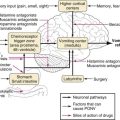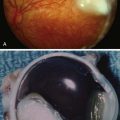Struggling with sore, tense muscles that seem to never stop bothering you? Maybe you should consider trying dry needling. At some point or another, we all eventually struggle with muscular issues, whether they be from an injury or simply sitting at a desk all day. There are also a ton of treatments that can relieve your pain, but sometimes these treatments are short-lived. That’s where dry needling comes in.
In this article, we’ll go through what dry needling is, how it works, its pros and cons, and whether it’s an effective solution for you or not.
What is Dry Needling?
Dry needling is a treatment commonly used by physical therapists or acupuncturists to relieve musculoskeletal pain resulting from injuries or other issues. When an individual undergoes dry needling treatments, the physio will insert a thin, extremely sharp needle into the body down to the underlying myofascial.
Generally, the needles would be inserted into areas with trigger points. These are areas where your muscles become tense and tender. The needles are used to alleviate pain at these trigger points by decreasing tightness, improving circulation, and relieving pain.
A common concern regarding dry needling is that the needles used may contain medication. However, the needles used for dry needling are solid with no gap for medication to pass through, thus the treatment’s name.
The pros and cons of dry needling
The idea of having needles stuck into your body can be intimidating for some of us. However, in many cases, some people say they don’t even feel the needles, they’re so sharp. Still, weighing up the pros and cons before going for the treatment is a great way to put your mind and body at ease. Here are the pros and cons of going for dry needling treatment:
Pros:
- Dry needling is an effective treatment to alleviate muscular issues or neuro-musculoskeletal injuries
- Treatment often provides immediate and long-lasting relief
- It’s an effective solution to reducing pain
- With the benefit of reducing pain, it can also reduce your need for pain medication
- It’s known to reduce inflammation related to tendonitis and other issues
- The treatment doesn’t require a recovery or rest period
- The needle is solid and thinner than typical needles used by doctors
- The risk of injury or other issues developing from dry needling is extremely low
Cons:
- While the aim of the treatment is to reduce muscle soreness, some patients might be sensitive in the areas where the needles were inserted
- Likewise, people who bruise easily they might bruise where the needle was inserted, too
- Sometimes, patients find the treatment very uncomfortable
Is it effective?
Isn’t this the most important question to answer? Does dry needling work? In short, yes, it does! Research shows that dry needling has been proven to be an effective means of relieving and managing musculoskeletal pain when done correctly.
Because this treatment targets areas with muscular tension or knots and alleviates the pressure built up, its results generally lead to reduced pain and increased mobility in that part of the body. Dry needling is also known to be a longer-lasting solution than other soft tissue dysfunction treatments.
The method of application for dry needling will change depending on the area of your pain and your condition. It’s best to consult your physician regarding dry needling treatment options before you go for the treatment.
Some successful results
Still need a bit of convincing to see whether this is the treatment for you, here are some success stories that should seal the deal for you. In one case, a patient complained about having incredibly painful and consistent headaches. After going through several ineffective treatments, they tried dry needling and under-went a three month treatment. Once completed, their headache ceased and they could continue life as per normal.
In another case, a competitive runner had to give up their passion for years due to a constant pain in their knee. They tried physical therapy and it didn’t work. After going for dry needling, they could resume running pain free.
One last successful case, a 40-year-old lady had a Rotator Cuff repair but 12 weeks after the operation, she still couldn’t raise her arm over 90 degrees. After our first dry needling session she was able to move it another 40 degrees.
Final Thoughts
Muscular pain can be debilitating and can stop you from doing basic tasks in everyday life. Quality of life is important, and if there’s a solution to provide that for you, and if you struggle with muscular issues, why not take it? If you’ve gone through multiple treatments and know of them working for your issue, consider going dry, needling a go next; it might be your final solution.





